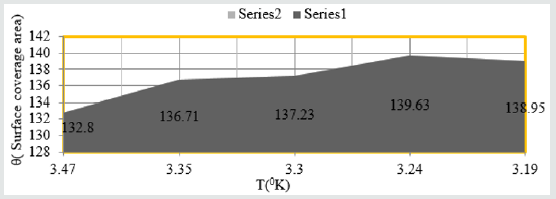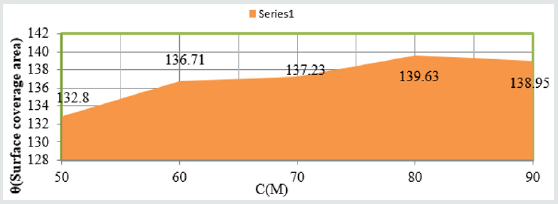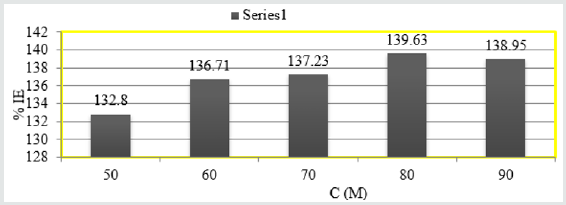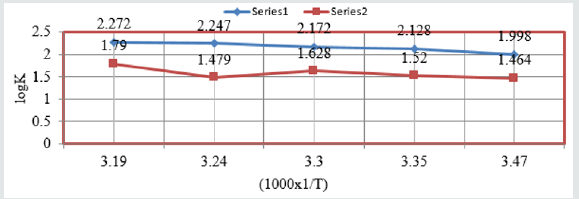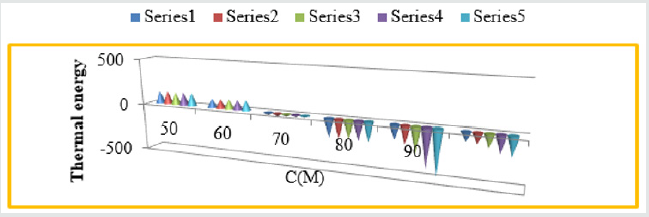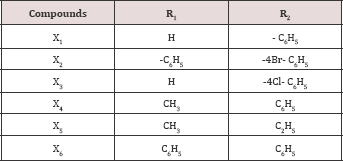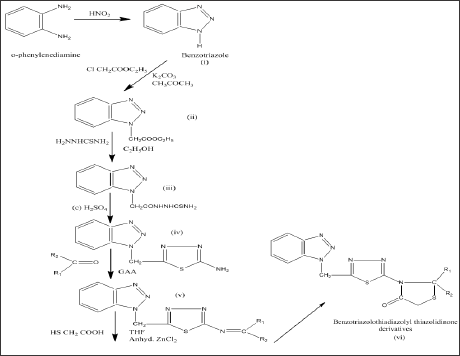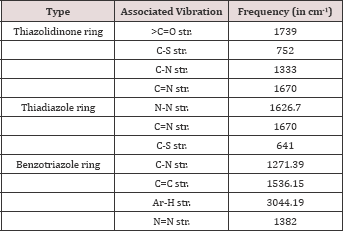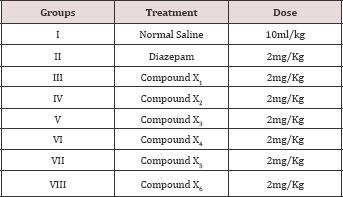Lupine Publishers | Journal of Reproductive System
Abstract
Background: Postpartum depression is a common occurrence which
is often undiagnosed when symptoms are not severe and may progress
into severe or chronic state if unrecognized and untreated. Being the
most frequent form of mental illness in the postpartum period, it
can begin as early as two weeks after delivery. It is also the most
common complication of childbearing and as such represents a
considerable
public health problem affecting women and their families.
Objective: To assess the prevalence of postpartum Depression and associated factors among postnatal women who are attending at Hiwot
Fana Specialized University Hospital, Eastern Ethiopia, 2016.
Methods: The study was conducted by using institutional based
cross-sectional study design and non probability convenience sampling
technique, until the required sample size of 122 was attained. The data
was collected by using a structured, pre designed questionnaire from
February 22/02/2016-March 22/03/2016. The data was analyzed manually and
presented by using frequency table and graphs.
Results: A total of 122 postnatal mothers were involved into
this study and all of them were analyzed. This study found a prevalence
of PPD
one week after delivery at HFSUH was 13.11%. Recent pregnancy was
reported as unwanted by 2.46% and partner’s support was perceived as
inadequate by 19% of the respondents and Caesarian section was 38.52%.
Almost all, 95.90 % exclusively breast fed their infants and minor
illnesses had occurred to 13.11% of the infants. Premature baby 5.74%,
poor satisfactions with medical care 22.13%, family history of mental
illness 3.28% were strongly associated with PPD. The other factors such
as neonate illness, residence, desired new born sex, hypertension, and
hyper emesis had also their own significant association. Educational
status, number of birth, age, place of delivery and sex of new born had
no
significant association with PPD.
Conclusion: This study found a prevalence of PPD among women
delivering at HFSUH, one week after delivery was 13.11% which is a
significant high value and compared well with other studies. The
findings in this study may form the bases for the need of routine
screening of
PPD in the post natal care especially those mothers with unplanned
pregnancy, premature baby, poor support systems, poor satisfaction with
medical care, family history of mental illness, and stressful life
events which were highly associated with PPD. This would help prevent
PPD at
all levels hence a healthy mother.
Recommendation: Psychiatry staff of HFSUH should collaborate
the services given for psychiatric cases and other gynecologic and
obstetrics
as well as general medical conditions. Routine screening for mental
illness just like other reproductive problems for mothers attending
hospital during delivery and after delivery is necessary. Finally,
ministry of health should design policy that interactively provides
mental illness
of mother and their reproductive problems.
Ethical consideration: The study was conducted after ethical
clearance had been given from Haramaya University College of Health and
Medical Science. Ethical clearance letter was submitted to Hiwot Fana
Specialized University Hospital and management body permitted to
conduct research.
Introduction
Background
Postpartum depression also known as postnatal depression is
a non psychotic depressive disorder of variable severity and it can
begin as early as two weeks after delivery and can persist indefinitely
if untreated. Most of the time, it occurs within the first three month
after delivery. The illness can cause distress and impair a mother’s
ability to carry out her normal tasks, care for herself and care of her
baby. It is a clinical depression with symptoms that can include a
feeling of fatigue, social withdrawal, sadness, changes in sleeping
and eating patterns, and guilt (including related to ability to care
for the infant), crying, loneliness and low self esteem lasting longer
than two weeks or beginning two weeks or more after delivery
[1,2]. The term “Post¬partum Depression” encompasses several
mood disorders that follow childbirth. Important developments in
the study of PPD include its association with symptoms of anxiety
and bipolar disorders in addition to those of depression [2].
Becoming a mother can be difficult this is due to a major
psychological shift from viewing oneself as a woman who is pregnant
to viewing oneself as a new mother. This major emotional shift
may create problems. Following childbirth, seesawing emotions
and heightened emotional responses may occur [3]. The biological
mechanism of PPD is believed to coincide with that of major
depressive disorder. Depression in general is a disease of neuronal
circuit integrity, which has been shown in studies by a reduction
in brain volume of individuals diagnosed with major depressive
disorder. Interestingly, the amount of volume loss correlates
directly with the number of years of ill¬ness. Stress and depression
act to reduce numerous brain pro¬teins that promote neuronal
growth and synapse formation, and antidepressant medications
have been shown to increase these and other protective proteins,
thereby reversing the mechanism of depression.
These underlying neurobiological changes result from
developmental interactions between genetic susceptibility and
environmental factors (i.e., the psychosocial stresses ac¬companying
motherhood) rather than a simple “chemical im¬balance,” as
previously believed. Specifically, the neurobiolog¬ical effects of
rapid postpartum hormone withdrawal predispose women with
established risk factors to PPD. An interesting distinction that makes
PPD unique from other depressive disorders is that it is marked
by a prominent anxi-ety component. This may be why so many
cases of PPD are missed, as many clinicians use the Patient Health
Question¬naire which covers depressed mood and dysphoria, but
not anxiety-as their primary screening technique. The stress of
caring for a newborn or even the circumstances surrounding labor
and delivery may precipitate the first symp¬toms of PPD [4].
Multiple risk factors for postpartum depression have been
suggested as no single cause has been identified. Personal
vulnerability, personal traits and social factors such as unplanned
pregnancy occupational instability, single parenthood and marital
discord have been cited. The effects of postnatal depression on
the mother, her marital relationship, and her children make it an
important condition to diagnose, treat and prevent. The mother
unable to provide care to her infant as manifested by decreased
adherence to regular check up well baby visits and increased
frequency health care provider’s visits due to infant problems.
Lastly depressed mothers have lower rates of gratification and
enjoyment in their mothering role compared with non-depressed
mothers. The patterns of symptoms in women with postpartum
depression are similar to those in women who have depression
unrelated to childbirth apart from the fact that the content may focus on the delivery or baby. Evidence from epidemiological
and clinical studies suggests that mood disturbances following
childbirth are not significantly different from affective illnesses that
occur in women at other times [5,6].
Statement of the problem
Postnatal depression (PND) is a global public health issue.
It is the most common complication of childbearing and as such
represents a considerable public health problem affecting women
and their families. The effects of postnatal depression on the mother,
her marital relationship, and her children make it an important
condition to diagnose, treat and prevent [2]. Postpartum Depression
(PPD) encompasses several mood dis¬orders that follow childbirth.
It affects 10-15% of new mothers, but many cases of PPD remain
undiagnosed. Thus, prevalence rates in the developing world range
from being equal to almost double that of developed countries.
Risk factors identified in these studies include previous psychiatric
problems, life events in the previous year, poor marital relationship
and economic deprivation. Female infant gender was found to be an
important determinant of postnatal depression in India but not in
South Africa.
These studies found that postnatal depression was associated
with high degrees of chronicity, disability and disturbances of mother
infant relationship [7]. Postpartum common mental disorders
such as depression and anxiety are increasingly recognized for
their burden in low resource countries such as Ethiopia. However;
the magnitude of postpartum depression in Ethiopia is not well
established so identifying magnitude of postpartum depression
and associated factors in our country is essential to minimize
mental illness that is related to mothers who give birth. Estimates
for depression during and after pregnancy have range from 9% to
20%, and for postpartum common mental disorder, the estimates
have been as high as 33%, even if these problems are there, there
is no good awareness and satisfactory intervention especially for
those who live in remote area from the health center [8].
Multiple risk factors for postpartum depression have been
suggested as no single cause has been identified. Personal
vulnerability, personal traits and social factors such as unplanned
pregnancy, occupational instability, single parenthood and marital
discord have been cited. Screening for postpartum depression
would improve the ability to recognize these disorders and hence
necessitate enhanced care that ensures appropriate clinical
outcomes [6]. Untreated postpartum depression can have adverse
long term effects. For the mother, the episode can be the precursor
of chronic or recurrent depression. For her children, a mother’s
ongoing depression can contribute to emotional, behavioral,
cognitive and interpersonal problems in later life. If postpartum
depression is to be prevented by clinical or public health
intervention, its risk factors need to be reliably identified, however,
numerous studies have produced incomplete consensus on these
[5].
This research is relevant because the prevalence of PPD and
its associated factors are not well known as well as there is no
proper intervention. Determining the prevalence of PPD is critical to manage and prevent further complication. It will also help
to identify its impacts on mother and child. The purpose of this
study is to evaluate the prevalence of PPD and associated factors;
it is expected to sensitize the health care professionals and policy
makers on the importance of maternal mental health and the need
for routine screening for postpartum depression by disseminating/
reporting the result of the research at Hiwot Fana Specialized
University Hospital by the year 2015/16.
Significance of the study
In Ethiopia there are no published researches (up to our
reading) on PPD and its associated factors, due to this our study
plays an important role to determine and solve the problem by
disseminating the result to concerned bodies. This study provides
an evidence base from which further studies can be done and
compared, not just at this hospital only, but from other hospitals in
Ethiopia. It serves as initial to do further research and a pioneering
study for our junior students and other investigators toward future
studies among related subjects. It also expands our knowledge
about the various aspects of PPD among Harar women in order
to focus on coming researches. Significance to public health and
maternal health practice: This study is expected to unveil and draw
the attention of health care practitioners to many ignored aspects
of PPD and its associated factors, in order to give them more
focus towards the integration of PPD screening during the care of
pregnant and postpartum women.
Significant to health care decision makers: The study is expected
to urge health care decision makers to consider this important topic
– PPD in the planning and delivering of health care services.
Study Objectives
General objective
a. To assess the prevalence of postpartum Depression and
associated factors among postnatal women attending at Hiwot
Fana Specialized University Hospital, Harar, Eastern Ethiopia in
2015/16.
Specific Objectives
a. To determine the prevalence of PPD among postnatal
women attending at Hiwot Fana Specialized University Hospital,
Harar, Eastern Ethiopia in 2015/16.
b. To identify the factors that associated with PPD among
postnatal women attending at Hiwot Fana Specialized
University Hospital, Harar, Eastern Ethiopia in 2015/16.
Methods
Study Area
This study was conducted in Harar, the capital of the Harari
national state. Harar is the capital city of Harari Regional state is
located in Eastern part of Ethiopia which is 525 Km from Addis
Ababa with a total area of 17.20 Km2. According to the regional
profile 90% of the region is estimated to be “woinedega” (Between
1000-1500m) and situated at 900, 230 Altitude and 420, 240
longitude and with elevation of 1600 feet above the sea level According to the 2007 census, the regional state of Harari has a
total population of 183,415. The region has 77.6% health coverage,
two Zonal Hospital MAH and HFSU, one regional public health
laboratory and research center and one nursing school. Moreover,
there are two other governmental hospital army Hospital and Public
Hospital [9]. Among Hospitals HFSUH, Jegola Hospital and Army
Hospital provide psychiatry service. Jegola Hospital has 1 0PD and
2 staffs (1BSC, 1 advanced Diploma psychiatric Nurses) and in Army
Hospital 1 0PD (1Psychiatry nurse). HFSUH has 7 beds, 2 OPDs, 10
staffs (8BSc psychiatry Nurses, 2 Diploma Psychiatry Nurses, But
currently no psychiatrist), and also there are 2 gynecology ward
and 1 OPD, 14 obstetrics ward and 6 pediatric [10].
Study design and period
Study design: Institutional based cross sectional study design
was used to determine prevalence of postpartum depression and
associated factors among postnatal women attending at Hiwot Fana
Specialized University Hospital.
Study period: The study was conducted from February
22/02/2016-March 22/03/2016.
Population
Source population: All postnatal mothers who attended at
Hiwot Fana Specialized University Hospital.
Study population: A postnatal mother who attended at Hiwot
Fana Specialized University Hospital during the data collection
period and who’s the data was taken.
Sample size determination and sampling technique
Sample size determination: The formula that we have used to
calculate sample size in the study was:
Equation 1:

Where d = margin of error= 5% in case of our study
α = level of confidence (95%- 1.96)
P = Prevalence of point under consideration that taken as 50%
because there is no known prevalence.
By this no=sample size
Equation 2:

no = 384
We add Non respondent rate =10%, from this no=423
We Use reduction formula because our total population is less
than 10,000 (the average of total post natal
women in the last year on February and this year on January is
170).
Equation 3:

Equation 4:

Sampling technique: Data was taken from patients who are
present at a time of data collection, because of this, non probability
convenience sampling technique was applied to select study unit
among PPD patients.
Inclusion and exclusion criteria
Inclusion criteria:
a. Post natal women who are attending at Hiwot Fana
Specialized University Hospital.
b. Age 15-47 or reproductive age group.
c. Ability and acceptance to consent to participate in the
study.
Exclusion criteria
d. Patients, who cannot able to communicate,.
e. Patients, who have depression that persist beyond 1 year
after giving birth.
f. Patients who are not volunteer to participate in the study.
Study variables
Dependent variable
Postpartum depression
Independent variable
Socio demographic factors:
a. Age
b. Occupation
c. Residence
d. Income
e. Marital status
f. Educational status
g. Pregnancy and birth related factors:
h. obstetric history
i. complication during delivery
j. place and type of delivery
k. whether mother wanted pregnancy to occur
l. medical problem or chronic diseases
m. New born related factors:
n. desired gender of new born,
o. whether the new born has any diseases
p. whether the new born is delivered before 9-month
q. whether he/she is fed by breast or formula or both
r. Maternal and family related factors:
s. relationship with her husband and her family members
t. support and help provided by her husband
u. Psychosocial and psychological factors:
v. personal and family history of mental illness
w. history of depression during the last pregnancy
x. stressful life event like loss of loved one
Data collection procedure
Data collection: Data was collected by using both interview
guided structured questionnaire and standard questionnaires
by three Data collectors, every data collector interviewed the
participants to the questionnaire voluntarily after informed
consent has obtained by convincing the patient, their information
was confidential.
Data collection instrument: The structured and standard
questionnaire which contains the following:
a. Socio-demographic history(age, sex, marital status,
education, occupation, residence, income)
b. Pregnancy and birth related factors (obstetric history,
complication, place and type of delivery, whether mother
wanted pregnancy to occur, medical problem or chronic
diseases).
c. New born related factors (desired gender of new born,
whether the new born has any diseases, whether the new born
is delivered before 9-month, whether he/she is fed by breast or
formula or both)
d. Maternal and family related factors(relationship with her
husband and her family members, support and help provided
by her husband)
e. Psychosocial and psychological factors(personal and
family history of mental illness, history of depression during
the last pregnancy, stressful life event)
f. Edinburg post natal depression scale
All the above tools were used to determine the prevalence and
associated risk factors of postpartum depression among post natal
women attending at Hiwot Fana Specialized University Hospital.
Data quality control
The quality of data was kept by preparing each and every
question related to our specific objectives and we incorporated
comments obtained in Amharic language and we conducted it. We
were also tried to improve our data by sharing information from
advisor and using standard data collection tools. Clear discussion
was done by group members about the purpose and procedures
of the study. The group members were decided to peruse non
respondents by explaining the objective of study clearly. The
collected data was checked out for the completeness, accuracy and
clarity by principal investigator. This quality checking was done daily after data collection and amendment was made before the
next data collection measure.
Data processing and Analyzing
Data processing: The collected data was processed manually
and using scientific calculators and the raw data was processed
by using tallying sheet, filling mater sheet, editing, cleaning and
checking for completion.
Data Analyzing: The data was analyzed by using table, figure,
frequency, percentages, and cross tabulation. Finally the finding
of the study was summarized, presented, discussed based on the
nature of questions. The association of factors was analyzed by
calculating odd ratio and chi- square.
Ethical Consideration
The study was conducted after ethical clearance is given from Haramaya University College of Health and Medical Science.
Ethical clearance letter was submitted to Hiwot Fana Specialized
University Hospital and management body was permitted to
conduct research. The objectives of study were clarified to Hiwot
Fana Specialized University Hospital and informed consent was
agreed as well as notified to patients and their information was not
observed by other body that was for the sake of research. A patients
verbally counseled regarding their ability to chose whether or not
they wanted to participate in the study and the fact that they would
not be victimized should they chose not to participated.
Results
A total of 122 mothers were interviewed, all were eligible for
analysis (with 100% response rate). Results were presented in
tables, percentages, and graphs followed by narration as shown
below.
Section one: Demographic information:
Table 1: Socio-demographic characteristics of the participants in Harar town, Hiwot Fana Specialized University Hospital from
February 1-30, 2016

Figure 1: Sociodemographic characteristics (religion) of
the participants in Harar town, Hiwot Fana Specialized
University Hospital from February 1-30, 2016. Out of
the total participants 51.64% were not employed, 8.20%
government employed, 1.64% self employed, 25.41%
farmer, 0.82% student, and 12.26% merchant.
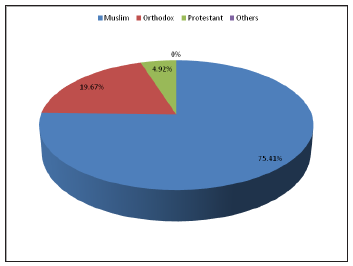
As Table 1 show below 47.54% were aged 20-24 years, 28.69%
were aged 25-29, 0.82% was single and the rest were married 50.82% were unable to read and write, 22.13% had schooled up to
primary level and 64.75% were Oromo. 56.56% of participants were
lived in urban and the rest were in rural. 54.10% of the participants
had <750 birr per month per individual of the family. Muslims
were the majority of them which accounts 75.41%, followed by
Orthodox 19.67%, and protestant 4.92% (Figures 1 & 2). Out of the
total participants 51.64% were not employed, 8.20% government
employed, 1.64% self employed, 25.41% farmer, 0.82% student,
and 12.26% merchant.
Figure 2: Sociodemographic characteristics (occupational
status) of the participants in Harar town, Hiwot Fana
Specialized University Hospital from February 1-30, 2016.
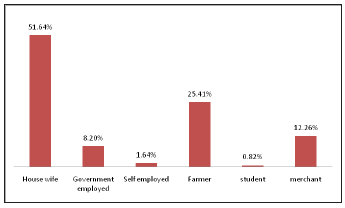
Section two: Pregnancy and Birth related factors:
Table 2: Pregnancy and Birth related factors of the participants in Harar town, Hiwot Fana Specialized University Hospital from
February 1-30, 2016.
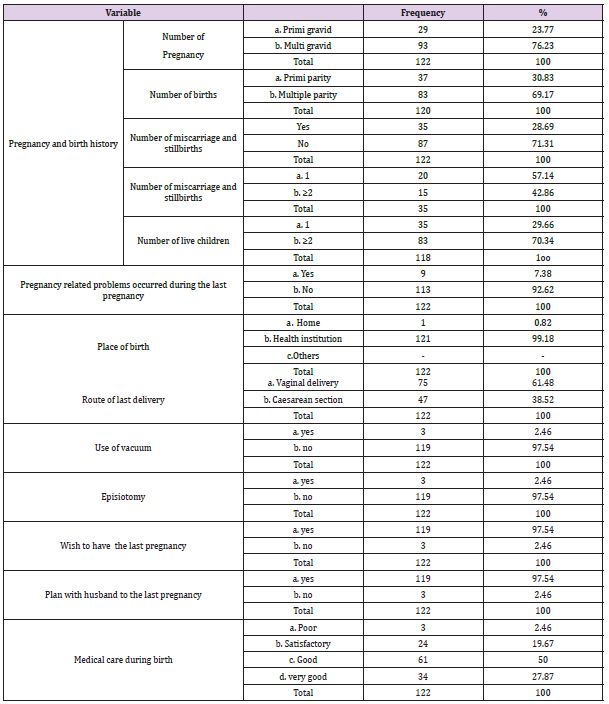
Table 3: marital and Family relationship satisfactions of the participants in Harar town, Hiwot Fana Specialized University Hospital
from February 1-30, 2016
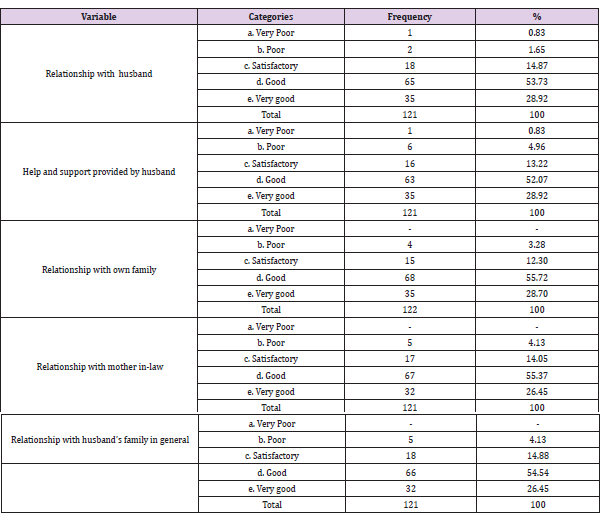
As the above Tables 2-6 show that 23.77% of respondent
mothers were primigravida (being pregnant for the first time).
30.83% and 69.17% of respondent mothers were primipara (giving
birth for the first time) and multipara (giving ≥2 birth). 57.14% of
the respondents had 1 miscarriage and stillbirths and the rest had
≥2 miscarriage and stillbirths. 92.62% of respondent mothers had
no any problems that faced the rest 7.38% had pregnancy related
problems during their last pregnancy. Except 1 mother all the
rest mothers gave birth in hospitals. 61.48% of the participating
mothers delivered their babies by vaginal delivery, 38.52%
delivered their babies by caesarean section, 2.46% reported the
use of vacuum during delivery and 2.46% reported episiotomy
was done during birth.27.87% and 50.00% of mothers reported
receiving very good and good medical care during birth. In contrast,
19.67% & 2.46% reported that the medical care was Satisfactory
and poor respectively.
Table 4: common PPD symptoms with respect to EPDS of the participants in Harar town, Hiwot Fana Specialized University Hospital
from February 1-30, 2016
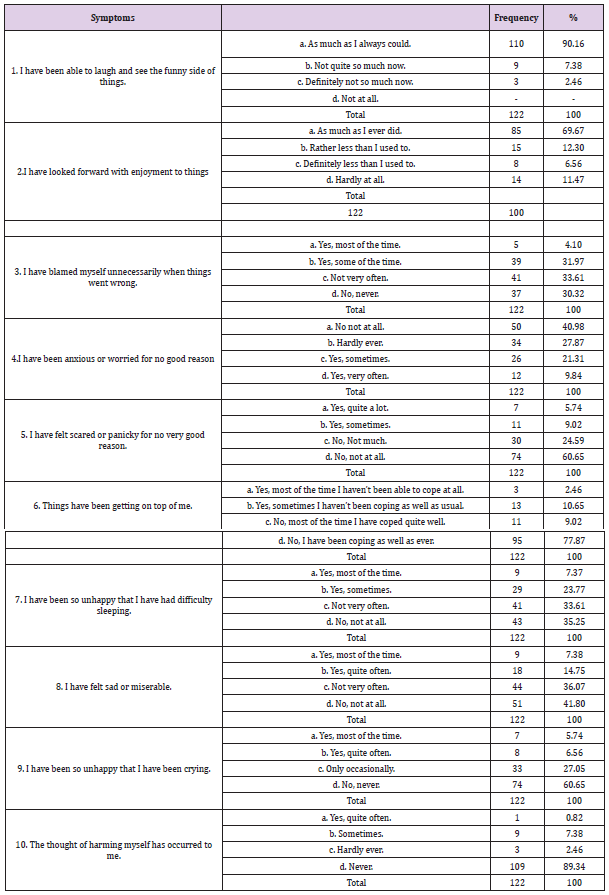
Table 5: Association between PPD and Sociodemographic variables of the participants in Harar town, Hiwot Fana Specialized
University Hospital from February 1-30, 2016
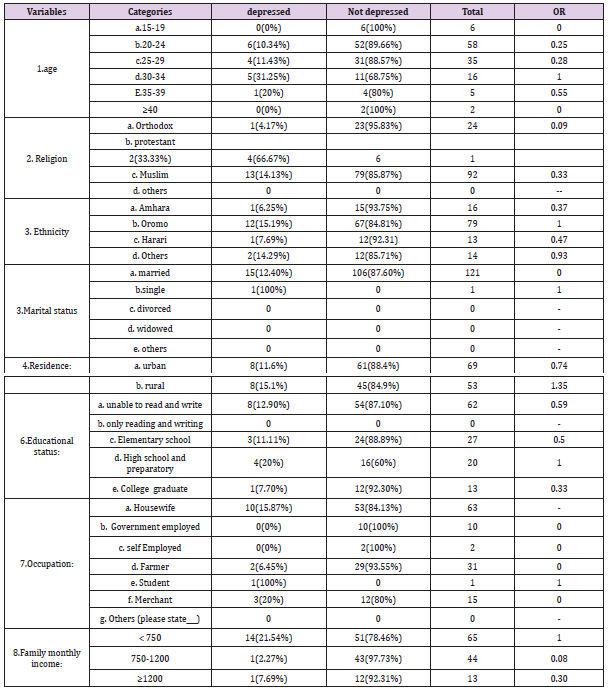
Table 6: Association between PPD and Pregnancy and Birth variables of the participants in Harar town, Hiwot Fana Specialized
University Hospital from February 1-30, 2016
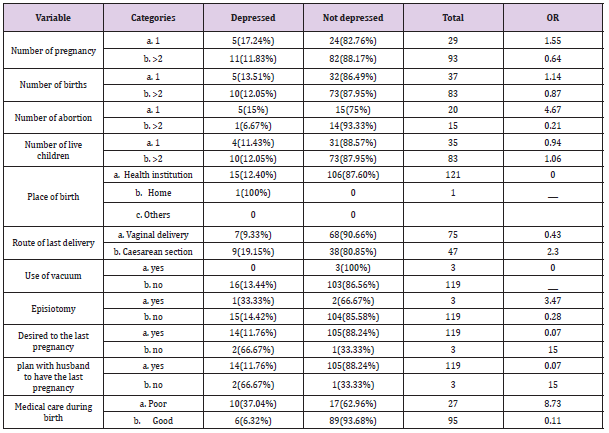
Section three: New born related factors: (these questions
are related to your last baby)
Figure 3: New born related factors of the participants in
Harar town, Hiwot Fana Specialized University Hospital
from February 1-30, 2016.
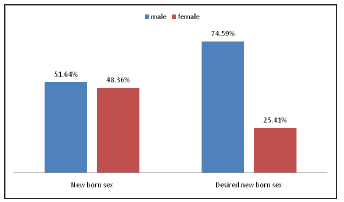
63(51.64%) of the participating mothers gave birth to a male
baby and 59(48.36%) gave birth to a female. When the mothers
were asked about the preferred or desired sex of the baby,
91(74.59%) chose a male, 31(25.24%) chose a female (Figures 3
& 4). 16(13.15%) of mothers reported that their baby was ill, but
106(86.85%) of mothers reported that their baby was free from
illness. 10(8.20%) of mothers reported that their baby admitted
neonate intensive care unit soon after birth, but for the rest.
7(5.76%) of the mothers reported that their baby was premature
or delivered before completing 9 months of pregnancy and the rest
mothers reported that their baby was full term.117(95.90%) of the
mothers reported that breast feeding is the sole feeding type and
5(4.10%) reported using formula feeding exclusively.
Figure 4: New born related factors of the participants in
Harar town, Hiwot Fana Specialized University Hospital
from February 1-30, 2016.
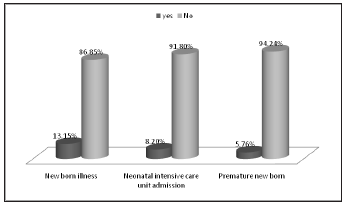
Section four: Marital and Family Relationship Factors
The participating mothers were asked five questions regarding
their satisfaction and evaluation of their relationship with their
husband, their own families, their mother’s in-laws and their
husband families in general. About 0.83% of respondents had
very poor relationships, 1.65% had poor relationships, 14.87%
had satisfactory relationships, 53.73% had good relationships and
28.92% had very good relationships with their husband.0.82% of
respondents got very poor, 4.96% got poor, 13.22% got satisfactory 52.07% got good and28.92% got very good help and support from
their husband.3.28%, 12.30%, 55.72% and 28.70% of respondents
had poor, satisfactory, good and very good relationships with
their own family respectively. About 4.13%, 14.05%, 55.37% and
26.45% of the respondents had poor, satisfactory, good and very
good relationships with their mother’s in-law respectively. 4.13%
of respondents had poor, 14.88% had satisfactory, 54.54% had
good and 26.45% had very good relationship with their husband
family in general.
Section five: psychosocial and psychological history
Figure 5: psychosocial and psychological characteristics
of the participants in Harar town, Hiwot Fana Specialized
University Hospital from February 1-30, 2016.
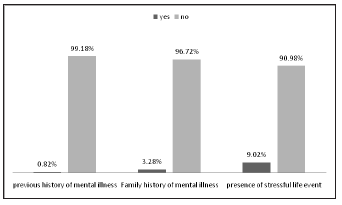
Figure 5, Only 1(0.82%) reported having personal mental
history and 4(3.28%) having family mental history. The
participating mothers were asked about 11 psychosocial stressors
and if they had experienced any of them during their pregnancy.
Among them 11(9.02%) had experienced at least one stressful
life event. The most reported stressor was death of a dear person
affecting 6(33.33%) of mothers, followed by recurrent verbal abuse
3(16.67%), financial problems 3(16.67%), accidents or injuries
2(11.11%), physical abuse 2(11.11%), abandon a dear person
1(5.56%) and housing problems 1(5.56%) and the rest stressors
such as work place problems, separation or divorce, severe illness
of you or dear person and difficulty in dealing with your children
accounts zero percent (0%)(Figure 6).
Figure 6: prevalence of stressful life events during
pregnancy in Harar town, Hiwot Fana Specialized
University Hospital from February 1-30, 2016.
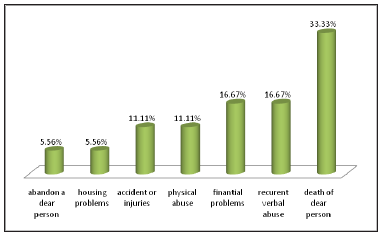
Section six: Edinburgh Depression Scale
From Table 4.
Prevalence of postpartum depression
According to this result, out of the 122 mothers participated,
16(13.11%) were found to have postpartum depressive symptoms
as measured by an EPDS score of ≥ 13. Potential risk factors for
PDD were shown below by Tables 7-11. Undesired and unplanned
pregnancy, poor satisfaction with medical care, premature new
born, poor support provided by husband, poor relationship
with husband family, recurrent verbal abuse, and family history
of mental illness had strong association with PPD. 16 out of 122
study participants screened positive for postpartum depression as
tabulated from a score ≥ 13 on the EPDS (Figure 7).
Table 7: Association between PPD and Pregnancy and Birth related stressors of the participants in Harar town, Hiwot Fana Specialized
University Hospital from February 1-30, 2016.
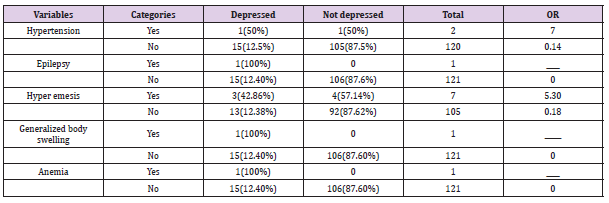
Table 8: Association between PPD and new born related factors of the participants in Harar town, Hiwot Fana Specialized University
Hospital from February 1-30, 2016
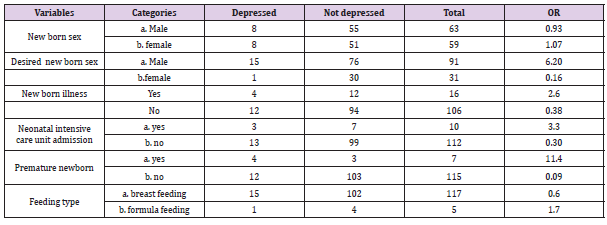
Table 9: Association between PPD and social support and family Relationship variables of the participants in Harar town, Hiwot
Fana Specialized University Hospital from February 1-30, 2016

Table 10: Association between PPD and mental and psychological variables of the participants in Harar town, Hiwot Fana Specialized
University Hospital from February 1-30, 2016.

Table 11: shown below seven of the tested 11 stressful life
events during pregnancy was significantly associated with the presence
of PPD. These were: abandon a dear person 1(100%) has PPD compared to
12.40% of not reporting this event), recurrent verbal abuse
(66.7% had PPD compared to 11.76% of not reporting this event and it had
odds of 15), accidents or injuries (50% had PPD compared
to 12.50% of not reporting this event and it had odds of 7) and death of
a dear person (50% had PPD compared to 11.21% of not
reporting this event and it had odds of 7.92).
2. Association between PPD and mental and psychological variables
(stressful life events) of the participants in Harar town, Hiwot
Fana Specialized University Hospital from February 1-30, 2016.
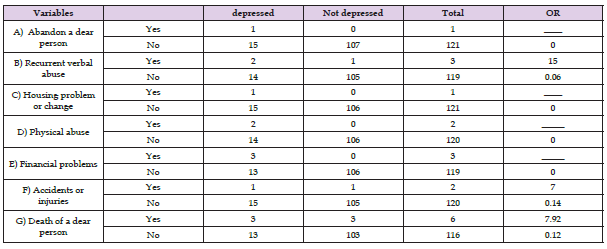
Figure 7: Prevalence of PPD among mothers attending
at Hiwot Fana Specialized University Hospital from
February 1-30, 2016.
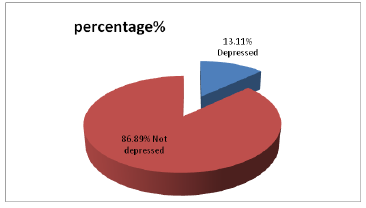
Factors associated with PPD
a. Socio Demographic Characteristics
Among the total participants those who were from rural had 1.35 odds than urban women. Factors such as age, religion, ethnicity,
occupation, marital status, educational status, and income had no
significant association with PPD according to this finding. From
above table primigravida had odds of 1.55 than multigravida and
prim parity had odds of 1.14 than those with milt parity. High Odds
ratio of PPD were associated with; mothers who had abortion for
the first time 4.67, Caesarean section delivery 2, episiotomy during
their delivery 3.47, Unplanned pregnancy 15, and poor satisfaction
by medical care 9. Among the pregnancy related problems as shown
below by Table 7, high odds ratio of PPD were associated with
hyper emesis 5 and hypertension 7. The rest of problems had no
significant association with the disorder. Under new born related
factors high odds of PPD were associated with desired male sex 6,
mothers who have premature newborn 11 and mothers who had
baby with health problem 2.6. The other factors had no significant
association with PPD [1-14].
As the table below show, the association between family
relationship and PPD was tested.PPD (EPDS cut off ≥ 13) was significantly associated with poor husband and marital relationship
satisfaction with PPD rate of 38.1% and 8% among mothers
reporting poor and good relationship respectively (OR= 7.1), poor
husband help and support with PPD 39.13% and 7.70% among
mothers reporting poor and good support and help respectively
(OR=8.4) and poor mother in-law relationship satisfaction with
PPD rate of 36.36% and 8% among mothers reporting poor and
good relationship respectively (OR=6.5). Poor relationships with
husband’s family in general had odds of 8.4. As table shown below
one of mother reported a personal history of mental illness and she
had PPD. Family history of mental illness had odds of 7.42. In general
high odds of PPD were associated with undesired and unplanned
pregnancy, poor satisfaction with medical care, hypertension and
hyper emesis, desired new born sex (male), admission of newborn
to ICU, premature new born, poor relationship with husband,
husband families, mother-in-law, poor support from husband,
family history of mental illness, recurrent verbal abuse, accident
and death of dear person.
Discussion
Prevalence and its Associated Factors
The aim of this study is to determine the prevalence of PPD and
its associated factors of mothers who attained at HFSUH. There
are also another studies conducted on this topic which done in the
different part of the world. Research conducted in Brazil by using
cohort study, a total of 1,340 pregnant women were identified.
The prevalence of postpartum depression was 16.5%. The
adjusted analysis found the risk factors for PPD to include lower
socioeconomic status, not living with a partner, previous stressful
events [11]. While this study shows the prevalence of PPD was
13.11%. The associated factors that strongly linked with PPD were
unplanned pregnancy, premature baby, poor support systems, poor
satisfaction with medical care, and family history of mental illness,
recurrent verbal abuse, accident and death of loved one.
The aim of this study is to determine the prevalence of PPD and
its associated factors of mothers who attained at HFSUH. There
are also another studies conducted on this topic which done in the
different part of the world. Research conducted in Brazil by using
cohort study, a total of 1,340 pregnant women were identified.
The prevalence of postpartum depression was 16.5%. The
adjusted analysis found the risk factors for PPD to include lower
socioeconomic status, not living with a partner, previous stressful
events [11]. While this study shows the prevalence of PPD was
13.11%. The associated factors that strongly linked with PPD were
unplanned pregnancy, premature baby, poor support systems, poor
satisfaction with medical care, and family history of mental illness,
recurrent verbal abuse, accident and death of loved one. variation might be the difference in sample size, and regional/
culture of society. In addition to this, the research done in France
was specific to women with premature baby.
Research conducted in Iran by using cross-section study out
of 6,627 women in their postpartum period were identified and
screened for possible depression using BDI. Of these, 57.1% were
screened possible cases of depression and based on BDI scores, 20%
(1324) fell within the mild range of scores, 18.3% (1211) within
the moderate range, and 18.9% (1251) within the severe range.
Previous history of an affective disorder, history of depression is
consistently a strong risk factor for PPD. The research also found a
35.8% prevalence rate of severe depression (based on BDI score) in
women with a past history of depression [13]. But in this study the
prevalence of PPD was 13.11%. The associated factors that strongly
linked with PPD were unplanned pregnancy, premature baby, poor
support systems, poor satisfaction with medical care, and family
history of mental illness, recurrent verbal abuse, accident and
death of loved one.
The other factors such as cesarean section, episiotomy, neonate
illness, desired new born sex, hypertension, and hyper emesis
had also their own significant association. This great difference is
may be due to sample size, screening instrument and geographical
location/living circumstance of society might be contributed. Out
of the 149 Pakistani women assessed at 12 weeks in the postnatal
period, using the Edinburgh Postnatal Depression Scale (EPDS),
Multidimensional Scale of Perceived Social Support (MSPSS) and
Personal Information Questionnaire (PIQ),53 scored 12 or above on
the EPDS, giving an estimated prevalence of postnatal depression
of 36%. Sixty-six percent of the women screening positive in the
postnatal period had significant levels of Psychological distress in
the antenatal period [14]. In this study the prevalence of PPD was
13.11%.
The associated factors that strongly linked with PPD were
unplanned pregnancy, premature baby, poor support systems, poor
satisfaction with medical care, and family history of mental illness,
recurrent verbal abuse, accident and death of loved one. The other
factors such as cesarean section, episiotomy, neonate illness, desired
new born sex, hypertension, and hyper emesis had also their own
significant association. The variation when compared might be due
to timing at which the study was done three months after delivery,
multiple screening instrument use, and slight difference in sample
size. On the other hand, when we compare this result with similar
studies done in Africa which found the prevalence of PPD at Kenya
was 10.6% and its associated factors were being unemployment
and low household income, were significantly associated with
PPD. High Odds ratio of PPD were associated with; sex of infant not
desired, being on medication, pregnancy not wanted, prim parity,
and been single.
Factors such as age, C/section as mode of delivery were
insignificantly associated with PPD [6]. While this study shows the
prevalence of PPD was 13.11%. The associated factors that strongly
linked with PPD were unplanned pregnancy, premature baby, poor
support systems, poor satisfaction with medical care, and family history of mental illness, recurrent verbal abuse, accident and
death of loved one. The other factors such as cesarean section,
episiotomy, neonate illness, desired new born sex, hypertension,
and hyper emesis had also their own significant association. The
reasons for this slight difference may be timing at which the study
was done three months after delivery, the cultural variation and
slight variation in their sample size. The fact that the literature
demonstrates a wide variations in what is considered as a significant
score on the EPDS, may be the prevalence would have been higher
had the significant score been lowered to 11 or 12 as described in
the development of the EPDS. Further the prevalence obtained in
this study could be an underestimate since some mothers may not
have attended post natal care especially if they felt like they were
physically well, if they are uneducated or of low socio economic
status.
Limitation
Hospital based population may have placed a highly selective
group of respondents as seen in the high number of mothers
delivered via cesarean section (38.52%) and women’s who have
post natal complication. This could have been due to mothers
delivered via cesarean section and women are who have post natal
complication coming for postnatal care at HFSUH. Most of post natal
mothers attained care up to 2 weeks after delivery, so post natal
mothers after this period of time didn’t present at study area. There
might be mothers who are not available during data collection this
decrease the number of cases.
Conclusion
This study found a prevalence of PPD among women delivering
at HFSUH, one week after delivery was 13.11% which is a significant
high value and compared well with other studies. The associated
factors that strongly linked with PPD were unplanned pregnancy,
premature baby, poor support systems, poor satisfaction with
medical care, and family history of mental illness, recurrent verbal
abuse, accident and death of loved one. The other factors such as
cesarean section, episiotomy, neonate illness, desired new born
sex, hypertension, and hyper emesis had also their own significant
association. Residence, educational status, number of birth, age,
place of delivery and sex of new born had no significant association
with PPD. The findings in this study may form the bases for the
need of routine screening of PPD in the post natal care especially
those mothers with unplanned pregnancy, premature baby, poor
support systems, poor satisfaction with medical care, family history
of mental illness, recurrent verbal abuse, accident and death of
loved one. This would help prevent PPD at all levels hence a healthy
mother.
Recommendations
We would like to recommend
a) Psychiatry staff of Hiwot Fana Specialized University
Hospital should collaborates the services given for psychiatric
cases and other gynecologic and obstetrics as well as general
medical conditions.
b) The result should be available for the Hiwot Fana staff to
alert them on magnitude of PPD.
c) Hiwot Fana staff should be routinely screen for mental
illness just like other reproductive health problems for mothers
attending hospital during delivery and after delivery.
d) Researchers should have do further researches by
different study design, at other health institutions.
e) Haramaya University College of health and medical
science, Hiwot Fana Specialized University Hospital should plan
common policy to intervene the identified problem.
f) Finally ministry of health should design policies that
interactively provide service on mental illness of mother and
their reproductive problems.
Read More About Lupine Publishers Journal of Reproductive System Please Click on Below Link:
https://lupine-publishers-reproductive.blogspot.com/








